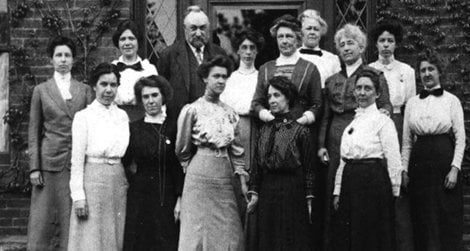In honor of Ketanji Brown Jackson, the first black female Supreme Court Justice, Name a Star is pleased to shine a light on women pioneers in astronomy. Learn their hidden stories.
Most would agree that Hypatia of Alexandria was the first female astronomer. Hypatia wrote explanatory notes for Almagest, an astronomical treatise by Ptolemy, the most influential Greek astronomer of his time. Hypatia was brutally murdered in 415 C.E. by a fanatical sect of monks who felt threatened by her level of knowledge and the encouragement for learning that Hypatia had inspired.
We have to fast forward to the 18th century to find our next set of female astronomers. In 1740 Émilie du Châtelet wrote Institutions de Physique to present Newton’s planetary movement theory in French. Du Châtelet updated Newton’s theory by replacing Newton’s geometric methods with the powerful new tool of calculus.
Caroline Herschel discovered a comet and a nebula, plus contributed over 500 stars to the Flamsteed star catalog. She spent most of her career toiling in her brother William’s shadow, however in 1787, King George III gave her official employment as William’s assistant, granting her a modest salary. She was also the first woman to receive honorary membership with Britain’s prestigious Royal Society.
An interesting group of women who advanced astronomy are those who worked with Edward Charles Pickering at Harvard Observatory. Pickering’s approach toward astronomic techniques was examining photographs, rather than taking notes while staring for hours through a telescope.
In 1881, Pickering had a problem, these photographs created massive amounts of data. Pickering’s assistant was inefficient at cataloging the stars, so Pickering did what any scientist of the latter 19th century would have done: he fired his male assistant and replaced him with his maid, Williamina Fleming. Fleming proved so adept at computing and copying that she would work at Harvard for 34 years–eventually managing a large staff of female assistants. These women, known as “computers”, revolutionized the science of astronomy.
Some of these women would produce significant work on their own. There stories will have to wait for another blog. The majority of the computers are remembered not individually but collectively, by the moniker Pickering’s Harem. The less-than-enlightened nickname reflects the status of women at a time when they were–with rare exception–expected to devote their energies to breeding and homemaking or to bettering their odds of attracting a husband.
The work of Williamina Fleming and her assistants resulted in the Henry Draper Catalogue. Like most star catalogs each star has a unique star number, but remains unnamed until Name a Star helps its customers name those stars in honor of a friend or loved one.

